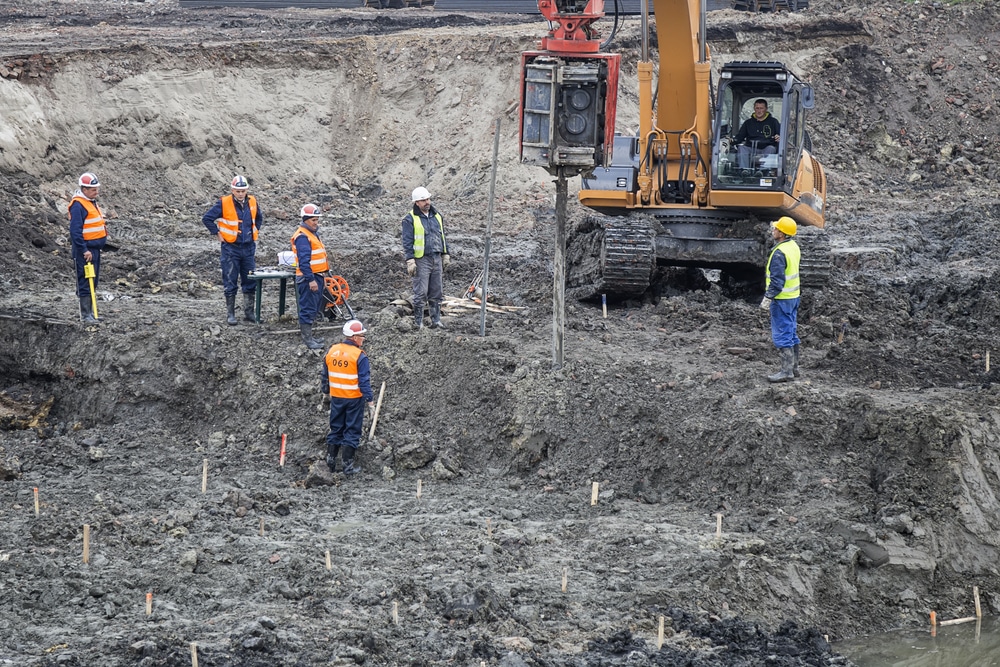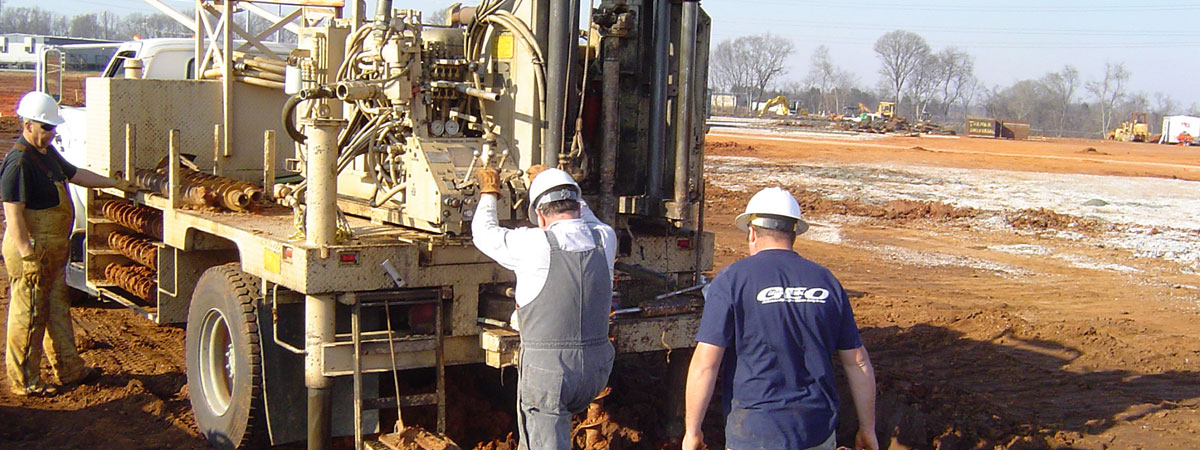Choosing the Right Geotechnical Engineers for Your Following Large-Scale Job
Wiki Article
The Interdisciplinary Approaches in the Geotechnical Industry: Connecting the Void Between Engineering, Geology, and Environmental Scientific Research for Optimal Project End Results
The combination of design, geology, and environmental science within the geotechnical market is not simply advantageous; it is essential for accomplishing ideal job outcomes. What techniques might emerge to facilitate this crucial cooperation and enhance the effectiveness of geotechnical techniques?Value of Interdisciplinary Collaboration
The significance of interdisciplinary collaboration in the geotechnical sector can not be overemphasized. Efficient geotechnical jobs need the assimilation of diverse expertise from different areas, including engineering, geology, and environmental science. This collaboration makes sure that all elements of a job are thought about, causing detailed remedies that resolve intricate obstacles.When functioning in isolation,Interdisciplinary collaboration cultivates technology by allowing experts to share understandings and techniques that might not be obvious. By leveraging the strengths of numerous self-controls, groups can determine potential risks, optimize design procedures, and boost the sustainability of geotechnical tasks. Such collaboration promotes an all natural understanding of site-specific problems, which is critical for accurate assessment and decision-making.
The complexity of geotechnical jobs requires a collaborated strategy to analytic. Inevitably, interdisciplinary collaboration is important for advancing finest practices and achieving quality in the geotechnical sector.
Trick Roles of Each Discipline
Partnership among different self-controls is not just valuable; it is essential for the effective implementation of geotechnical tasks. Each discipline-- design, geology, and environmental science-- plays an unique yet interconnected duty that adds to forecast efficiency and sustainability.Geotechnical designers are primarily in charge of designing structures and guaranteeing architectural honesty. They analyze dirt and rock homes to evaluate load-bearing capabilities, giving crucial information for safe construction techniques. Their competence enables the solution of ingenious services to complex obstacles.

Environmental researchers analyze the prospective effects of building on environments and water resources. They conduct ecological analyses and develop reduction strategies to minimize damaging results. By incorporating eco-friendly considerations, they ensure conformity with policies and promote sustainability throughout the job lifecycle.
Study of Successful Integration
Effective assimilation of geotechnical self-controls can be exemplified through various situation studies that highlight the efficiency of team effort in attending to intricate engineering obstacles. One significant instance is the building of the Hong Kong-- Zhuhai-- Macau Bridge, where a joint method entailing geotechnical design, geology, and ecological science was critical. Geologists and engineers functioned in unison to assess the seabed problems and maximize the foundation style, ensuring stability and reducing environmental influence.Another impactful case is the enhancement of incline security in the San Francisco Bay Area, where an interdisciplinary team integrated geotechnical evaluation with ecological assessments. By integrating geological studies and hydrological studies, the team properly identified possible landslide threats and applied efficient mitigation procedures, boosting security and sustainability.
In addition, the redevelopment of Brownfield websites commonly calls for a multidisciplinary method. In one instance in Chicago, partnership among geotechnical designers, ecological researchers, and city planners resulted in the successful removal of polluted soil, permitting the risk-free improvement of the site right into an area park. These case studies illustrate that interdisciplinary cooperation not only addresses technical obstacles yet additionally fosters ingenious options that benefit both tasks and areas.
Obstacles in Multidisciplinary Projects

Additionally, coordinating routines and process among numerous teams can be problematic, specifically when each technique has distinct task landmarks and deliverables. This misalignment can result in delays and raised expenses. The challenge of resource allowance additionally impends big; guaranteeing that specialized expertise is readily available at important points calls for cautious planning and foresight.
Finally, governing compliance postures an additional considerable challenge. Each self-control may face different governing frameworks, and lining up these needs to meet project purposes can be complicated and taxing. Resolving these challenges requires solid leadership and efficient interaction methods to cultivate cooperation and make sure that multidisciplinary groups function cohesively towards shared objectives.
Future Trends in Geotechnical Practices
As the geotechnical market develops, emerging patterns are improving methods to address the obstacles encountered in multidisciplinary tasks - geo tech engineer. One substantial fad is the boosted integration of advanced innovations, such as fabricated intelligence and artificial intelligence, right into geotechnical evaluation and layout. These modern technologies improve predictive modeling and risk evaluation, allowing engineers to make even more enlightened choices throughout the task lifecycle
In addition, the adoption of digital doubles and real-time tracking systems is ending up being extra prevalent. These devices promote recurring assessment of soil problems and structural efficiency, permitting prompt interventions when issues occur.
Verdict
In conclusion, the integration of design, geology, and environmental science is crucial for accomplishing optimal outcomes in the geotechnical market. Successful instance studies highlight the advantages of this technique, while acknowledging the obstacles faced in multidisciplinary tasks.The combination of engineering, geology, and ecological science within the geotechnical sector is not just useful; it is crucial for achieving ideal project results. Reliable geotechnical jobs call for the integration of diverse proficiency from numerous fields, including engineering, geology, and ecological science.Browsing the complexities of multidisciplinary jobs in the geotechnical sector presents a number of significant obstacles.As the geotechnical industry develops, arising consulting engineer trends are improving practices to attend to the challenges dealt with in multidisciplinary jobs. Geotechnical designers are significantly working together with ecological scientists to guarantee that jobs straighten with sustainability goals and conform with governing requirements.
Report this wiki page